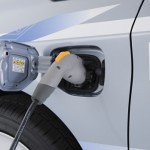
Another automobile manufacturer, Mini, dips its cast aluminum toe into the electric vehicle market, but this type it's scooter prototypes that appeared at the Paris Motor Show, rather than cars, as profiled by Wired magazine.
Details are scarce. It has an electric motor. You plug it in. But, the prototypes recall classic Italian scooters and Mods versus Rockers schtick.
There are three “interpretations” of the design by Adrian van Hooydonk, senior VP of design for BMW Group. One is a two-seater done up in the same colors (matte charcoal and yellow) as the Mini-E electric prototype. The second is a single-seater Mini calls “almost purist in design.” The third draws on British ’60s pop culture, particularly “the distinctive graphics of the Mod era.”
As a Mini Cooper owner and an admirer of the technology emerging from this BMW Group, it will be interesting to see how this plays out.

